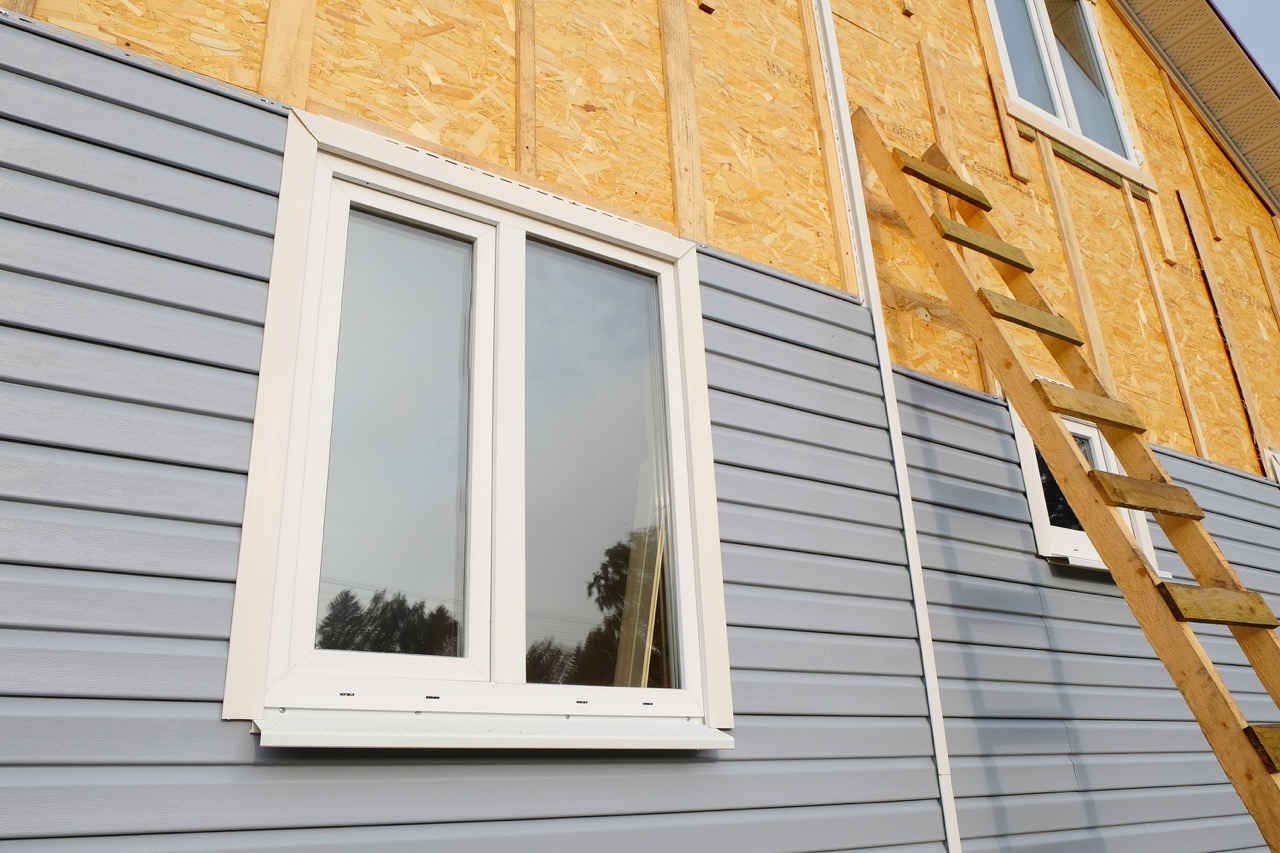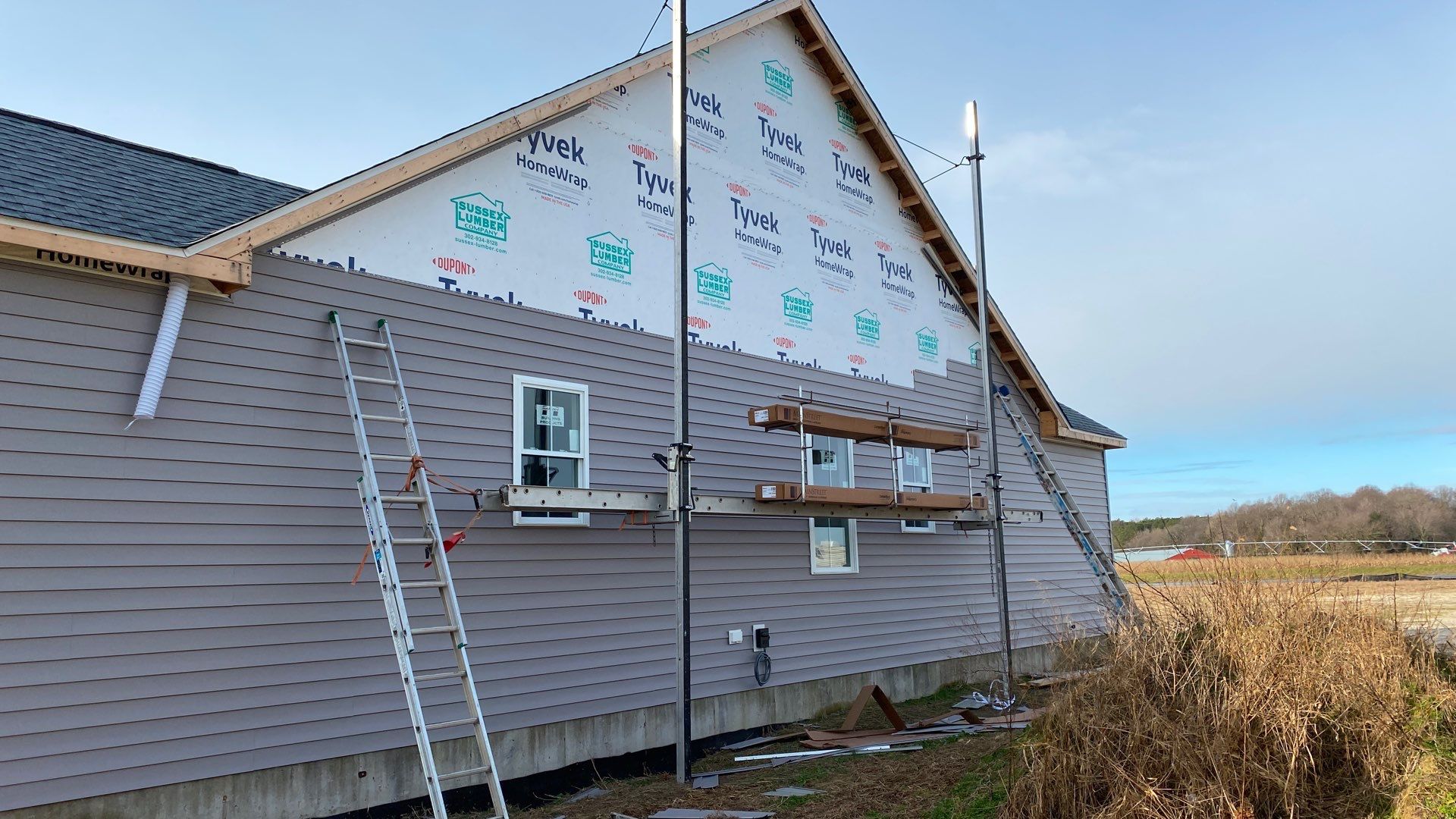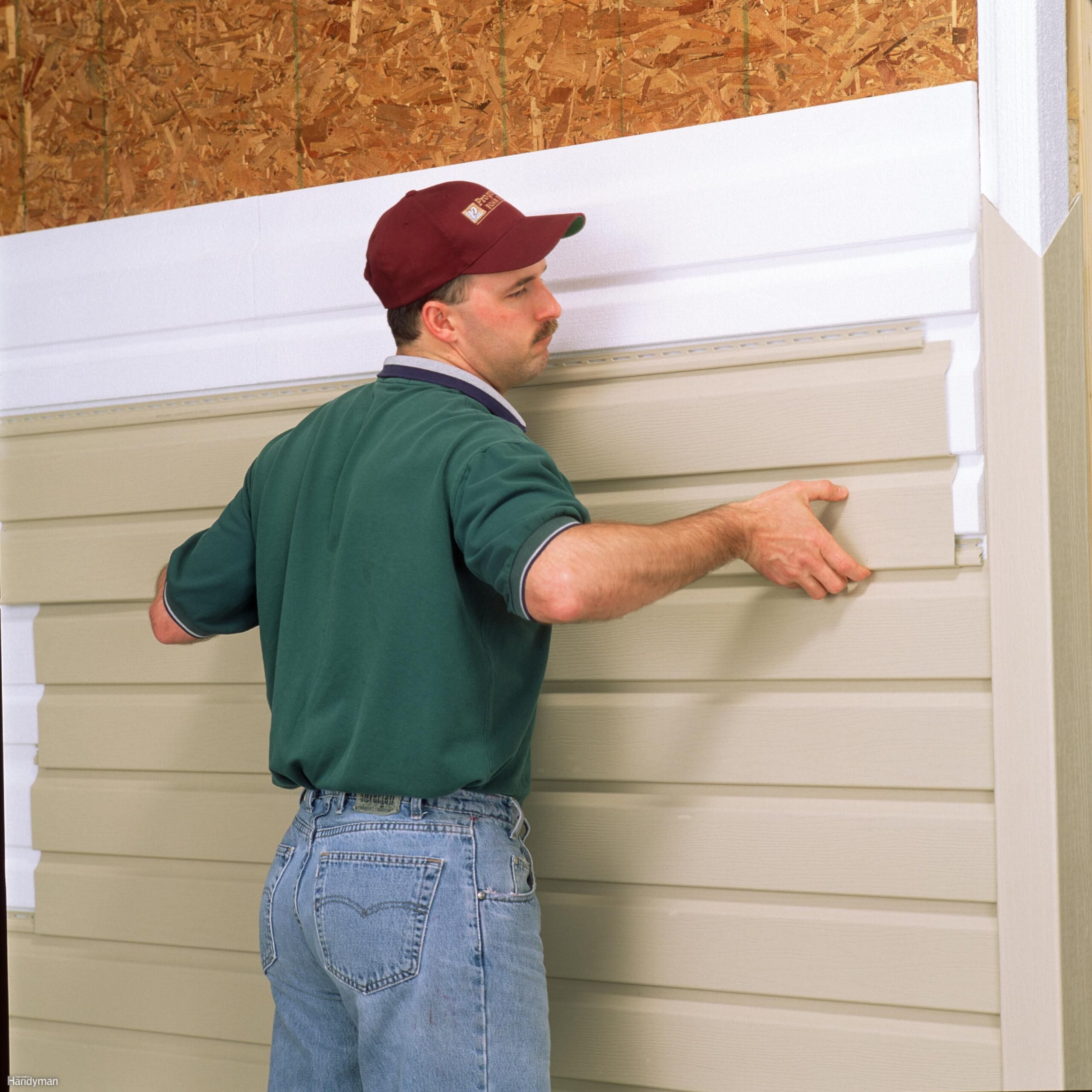Best Siding for Cold Climates
Best siding for cold climates isn’t just about aesthetics; it’s about protecting your home from the harshest winter conditions. Choosing the right material significantly impacts energy efficiency, longevity, and overall cost. This guide dives into the best options, installation techniques, and long-term maintenance to ensure your home stays warm and comfortable, even in freezing temperatures. We’ll explore various siding materials, comparing their pros, cons, and costs to help you make an informed decision.
From understanding R-values and insulation to mastering cold-weather installation techniques, we’ll equip you with the knowledge to choose and install siding that will withstand the test of time and the elements. We’ll also cover crucial aspects like preventing moisture damage and planning for long-term maintenance to keep your home looking its best and performing efficiently for years to come. Budgeting and visual examples will round out this comprehensive guide.
Types of Siding Suitable for Cold Climates
Choosing the right siding for a cold climate is crucial for both energy efficiency and the longevity of your home. The material you select needs to withstand freezing temperatures, snow, ice, and significant temperature fluctuations without cracking, shrinking, or allowing moisture penetration. This section will explore several popular siding options, comparing their performance in these harsh conditions.
Siding Material Comparison for Cold Climates
Selecting the right siding material significantly impacts your home’s energy efficiency and durability in cold climates. The following table summarizes the pros and cons of common siding choices, along with typical cost ranges. Remember that costs can vary based on location, labor, and material quality.
| Material | Pros | Cons | Typical Cost Range (per sq ft) |
|---|---|---|---|
| Vinyl Siding | Affordable, low maintenance, variety of colors and styles, resists rot and insect damage. | Can crack or warp in extreme cold, less durable than other options, can fade over time, lower R-value. | $2-$6 |
| Fiber Cement Siding | Durable, fire-resistant, resists rot, insects, and moisture, long lifespan. | More expensive than vinyl, can be brittle and prone to cracking in extreme cold if not properly installed, requires more maintenance than vinyl. | $6-$15 |
| Wood Siding | Aesthetically pleasing, can be painted or stained, good insulator (depending on type and thickness). | Requires regular maintenance (painting, sealing), susceptible to rot, insect damage, and moisture absorption, can shrink and crack in extreme cold if not properly treated. | $8-$20+ |
| Metal Siding (Aluminum or Steel) | Durable, long-lasting, fire-resistant, low maintenance, resists insects and rot. | Can dent, susceptible to damage from hail, can be noisy in rain or hail, can be cold to the touch. | $5-$12 |
| Engineered Wood Siding | Combines the aesthetics of wood with improved durability and moisture resistance, less prone to warping and cracking than solid wood. | More expensive than standard wood siding, requires proper installation to avoid moisture issues. | $10-$20+ |
Insulating Properties of Siding Materials
Siding’s contribution to a home’s overall insulation is often overlooked, but it plays a role. While siding doesn’t provide the same level of insulation as wall cavity insulation, its R-value contributes to energy efficiency. The R-value represents the material’s resistance to heat flow. Higher R-values indicate better insulation. It’s important to note that the R-value of siding is relatively low compared to insulation within the wall structure. The overall impact on energy efficiency is greater when considering the complete building envelope. For example, a typical vinyl siding might have an R-value of around 0.5, while fiber cement might be slightly higher. The actual R-value can vary depending on the thickness and specific product.
Durability in Extreme Cold
The durability of siding in extreme cold is critical. Materials like vinyl can become brittle and prone to cracking in extremely low temperatures, particularly if they experience significant thermal expansion and contraction cycles. Fiber cement, while more durable overall, can also crack if not properly installed to accommodate movement. Wood siding is susceptible to shrinking and cracking, especially if it’s not properly treated and sealed. Metal siding generally holds up well in cold climates, but it can be dented by hail or other impacts. Engineered wood siding, with its improved moisture resistance and structural properties, generally performs better in cold climates than solid wood.
Installation Considerations for Cold Weather Siding
Installing siding in freezing temperatures presents unique challenges. Success hinges on careful material selection, meticulous preparation, and adherence to best practices to prevent moisture intrusion and structural damage. Ignoring these considerations can lead to costly repairs down the line, significantly impacting the longevity and efficiency of your home’s exterior.
Adhesive and Fastener Selection for Cold Weather
The type of adhesive and fasteners used is crucial in cold weather. Standard construction adhesives may lose their effectiveness at freezing temperatures, resulting in poor bonding and potential siding failure. Consider using adhesives specifically formulated for low-temperature applications, often labeled as “winter-grade” or “low-temperature” adhesives. These products maintain their tack and bonding strength even in sub-freezing conditions. Similarly, fasteners must be chosen carefully. While standard nails might suffice in warmer temperatures, consider using longer nails or screws in cold weather to ensure sufficient penetration and secure hold, compensating for potentially brittle materials at low temperatures. Stainless steel fasteners are preferred for their resistance to corrosion, which can be exacerbated by fluctuating temperatures and potential ice formation.
Preparing the Exterior Wall for Cold Weather Siding Installation
Proper wall preparation is paramount before siding installation, especially in cold climates. This involves creating a robust moisture barrier to prevent water damage and maintain insulation effectiveness. Begin by thoroughly inspecting the existing wall for any damage, such as cracks, gaps, or rotted wood. Repair any issues before proceeding. Next, apply a continuous layer of high-quality building wrap, such as polyethylene sheeting or Tyvek, over the exterior wall. Ensure all seams are properly overlapped and sealed with appropriate tape to prevent air and moisture penetration. Over the building wrap, install rigid foam insulation boards to further enhance thermal performance and create a more uniform surface for the siding. This step significantly improves energy efficiency and helps mitigate the effects of extreme cold. Secure the insulation with appropriate fasteners, ensuring a tight fit to minimize gaps.
Preventing Moisture Damage During and After Siding Installation
Preventing moisture damage is critical during and after siding installation in cold, snowy conditions. Maintain appropriate expansion gaps between siding panels to account for thermal expansion and contraction. These gaps allow for movement without causing stress on the siding or underlying structure. Typical expansion gaps range from 1/8″ to 1/4″ depending on the siding material and manufacturer’s recommendations. Furthermore, carefully manage moisture during installation. Protect the installed siding from precipitation by using tarps or other protective coverings whenever necessary, especially during breaks in work or overnight. After installation, regularly inspect the siding for any signs of moisture intrusion, such as discoloration, mold, or mildew. Promptly address any issues to prevent more extensive damage. Regular maintenance, including cleaning and inspection, helps prolong the life of the siding and prevents future problems.
Maintenance and Longevity of Cold Climate Siding
Choosing the right siding for a cold climate is only half the battle. Proper maintenance significantly impacts the lifespan and aesthetic appeal of your home’s exterior. Neglecting maintenance can lead to costly repairs and premature siding failure, especially in harsh winter conditions. This section details the long-term care requirements for various siding materials common in cold climates, highlighting potential problems and preventative measures.
Long-Term Maintenance Requirements by Siding Type
Different siding materials require varying levels of maintenance. Understanding these differences is crucial for extending the life of your siding and avoiding expensive repairs. For example, wood siding needs regular cleaning and sealing to prevent rot and insect infestation, while vinyl siding requires less intensive care but still needs occasional cleaning to prevent staining and dirt buildup. Proper maintenance will vary based on material, climate exposure, and the presence of trees or other environmental factors.
Common Problems and Solutions
Cold weather presents unique challenges to siding. Ice damage, for instance, can cause cracking and warping, particularly in materials like wood and fiber cement. Proper caulking and sealing around windows and doors is essential to prevent water intrusion that can lead to damage during freeze-thaw cycles. Another common problem is expansion and contraction of siding materials due to temperature fluctuations. This can lead to gaps, cracking, and even detachment. Regular inspections and prompt repairs can prevent minor issues from escalating into major problems. For example, replacing damaged or loose siding pieces immediately can prevent further water damage and structural compromise.
Preventative Maintenance Schedule
A proactive maintenance schedule is key to preserving your siding’s integrity and longevity. This schedule should be tailored to your specific siding material and local climate conditions.
| Siding Type | Inspection Frequency | Maintenance Tasks |
|---|---|---|
| Wood | Twice yearly (spring & fall) | Clean with a mild detergent and water; inspect for rot, insect damage, and loose boards; re-caulk and seal as needed; apply a protective sealant every 2-3 years. |
| Vinyl | Annually | Clean with a garden hose and soft brush; inspect for cracks, holes, or loose pieces; repair or replace damaged sections promptly. |
| Fiber Cement | Annually | Inspect for cracks, chips, or damage; clean with a soft brush and water; repaint or re-stain as needed (every 5-7 years). |
| Metal | Semi-annually | Inspect for rust, dents, or loose panels; clean with a mild detergent and water; touch up paint as needed. |
Regular maintenance is far cheaper than major repairs or complete siding replacement. A small investment of time and effort can significantly extend the lifespan of your siding and protect your home’s value.
Cost Comparison and Budgeting for Cold Climate Siding
Choosing the right siding for a cold climate involves careful consideration of not only performance but also cost. While some options offer superior insulation and longevity, they often come with a higher upfront investment. Understanding the cost implications of different siding materials and factoring in long-term maintenance needs is crucial for effective budgeting.
Initial Costs of Different Siding Materials
The initial cost of siding varies significantly depending on the material chosen. Vinyl siding, for instance, is typically the most affordable option, offering a relatively low price per square foot. Fiber cement siding, known for its durability and resistance to fire and pests, sits in the mid-range price bracket. On the higher end of the spectrum, we find wood and metal sidings, with wood often requiring more extensive and costly installation and maintenance. The cost differences are substantial, potentially influencing the overall project budget significantly. For example, a 1500 square foot house might see a difference of $5,000 to $15,000 or more between vinyl and wood siding before labor is considered.
Long-Term Maintenance Costs
While initial cost is a major factor, long-term maintenance expenses should not be overlooked. Vinyl siding typically requires minimal maintenance, needing only occasional cleaning. However, fiber cement siding may need repainting every 10-15 years, adding to the overall cost. Wood siding demands regular maintenance, including staining, sealing, and potential repairs due to rot or insect damage, potentially leading to considerable expenses over the lifespan of the house. Metal siding, while durable, may require occasional touch-ups for scratches or dents. These long-term maintenance costs significantly impact the overall cost-benefit analysis of each siding option.
Estimating Total Project Cost
Accurately estimating the total cost of a siding project involves more than just the material cost. Labor costs, typically calculated per square foot or as a percentage of material cost, constitute a significant portion of the total. Permitting fees, which vary by location, must also be included. Furthermore, any necessary repairs or demolition of existing siding should be factored into the estimate. A reasonable approach involves obtaining multiple quotes from reputable contractors to compare prices and ensure accurate estimations. A general formula for estimating total cost is:
Total Cost = Material Cost + Labor Cost + Permitting Fees + Repair/Demolition Costs
Example Budgets for Different House Sizes and Siding Choices
The following examples illustrate realistic budgets for different house sizes and siding materials. These are estimates and may vary based on location, contractor, and specific project requirements.
- 1000 sq ft house: Vinyl siding: $8,000 – $12,000; Fiber cement siding: $15,000 – $25,000; Wood siding: $25,000 – $40,000
- 1500 sq ft house: Vinyl siding: $12,000 – $18,000; Fiber cement siding: $22,500 – $37,500; Wood siding: $37,500 – $60,000
- 2000 sq ft house: Vinyl siding: $16,000 – $24,000; Fiber cement siding: $30,000 – $50,000; Wood siding: $50,000 – $80,000
Note: These figures include material, labor, and permit costs. They do not account for potential unforeseen expenses or premium features.
Visual Examples of Siding in Cold Climates
Choosing the right siding not only protects your home from the harsh realities of a cold climate but also significantly impacts its aesthetic appeal. The interplay of siding material, color, and architectural style creates a cohesive and visually stunning exterior. Let’s explore some examples.
Examples of Siding on Different House Styles
This section showcases three distinct house styles, each featuring a siding material ideally suited for cold climates and highlighting the visual harmony achieved through careful color and architectural choices.
Example 1: A Classic Cape Cod with Vinyl Siding
Imagine a charming Cape Cod, its low-pitched roofline and symmetrical facade clad in creamy white vinyl siding. The subtle texture of the vinyl mimics the look of traditional clapboard, offering a timeless appeal. Dark green shutters and a contrasting dark gray front door provide a crisp contrast against the lighter siding. The landscaping, featuring evergreen shrubs and neatly manicured lawns, further enhances the classic, cozy feel. The vinyl’s low maintenance and durability make it a practical choice for a cold climate, requiring minimal upkeep in the face of snow and ice.
Example 2: A Modern Farmhouse with Fiber Cement Siding
A modern farmhouse, with its clean lines and emphasis on natural materials, looks striking with fiber cement siding in a warm gray tone. The subtle texture of the fiber cement adds depth without being overly ornate. Large windows, often a key feature of this style, are framed by contrasting black trim, creating a sharp, contemporary look. A metal roof in a dark charcoal gray complements the siding and adds a touch of rustic elegance. The use of fiber cement provides superior protection against moisture and temperature fluctuations common in cold climates.
Example 3: A Rustic Mountain Chalet with Engineered Wood Siding
Picture a cozy mountain chalet, nestled amidst snowy peaks. Its steeply pitched roof and exposed beams are complemented by rich brown engineered wood siding. The natural wood grain adds warmth and texture, evoking a sense of rustic charm. Stone accents around the base of the house further enhance the mountain aesthetic. Dark brown trim and accents, perhaps even some strategically placed wood beams, create visual interest and tie the elements together. Engineered wood siding, with its inherent strength and resistance to moisture, is a durable choice for a cold climate home exposed to heavy snowfall and freezing temperatures. The color palette draws inspiration from the surrounding natural environment, creating a harmonious blend of architecture and landscape.
Siding’s Impact on Curb Appeal and Energy Efficiency
Proper siding selection significantly contributes to both the aesthetic appeal and energy efficiency of a cold climate home. Visually appealing siding instantly enhances curb appeal, increasing property value and creating a welcoming atmosphere. Furthermore, high-performance siding materials, such as fiber cement or engineered wood, provide superior insulation, reducing energy loss and lowering heating costs. The right color choices can also contribute to energy efficiency by reflecting sunlight in the summer and absorbing heat in the winter. Darker colors absorb more heat, which can be beneficial in colder climates, while lighter colors reflect more sunlight, helping to keep the home cooler during the warmer months.
Visually Appealing Home Exterior Design in a Cold Climate
Consider a two-story home with a traditional design, featuring James Hardie® fiber cement siding in a sophisticated “Arctic White.” This color provides a clean, crisp look that complements the snowy backdrop of a cold climate. The siding’s smooth texture creates a modern feel, while its durable nature ensures long-lasting protection. Dark gray window frames and a deep blue front door add pops of color, creating a striking contrast against the bright white siding. The roof, a dark charcoal gray asphalt shingle, complements the color scheme while providing reliable protection from the elements. Landscaping with hardy evergreens and strategically placed snow-resistant shrubs further enhances the overall aesthetic, creating a welcoming and visually appealing home exterior perfectly adapted to a cold climate setting. The combination of the siding’s color, texture, and the careful selection of complementary elements creates a stunning and functional exterior.
End of Discussion
Selecting the best siding for a cold climate requires careful consideration of several factors. Ultimately, the ideal choice depends on your budget, aesthetic preferences, and the specific challenges posed by your local climate. By weighing the pros and cons of different materials, understanding proper installation techniques, and planning for long-term maintenance, you can ensure your home remains protected, energy-efficient, and visually appealing for years to come. Remember, a well-informed decision today translates to peace of mind and significant savings in the long run.









